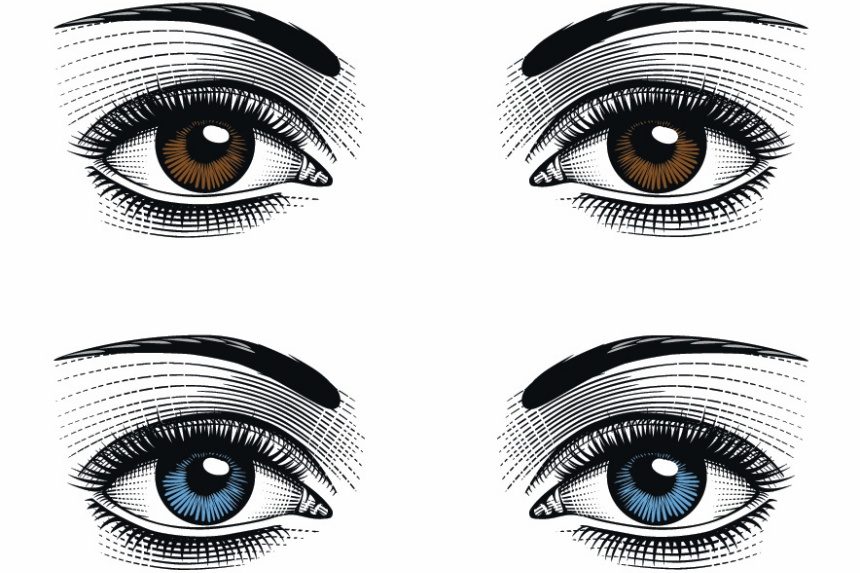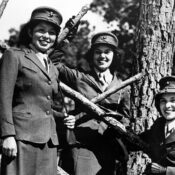Today’s heated arguments about critical race theory shouldn’t surprise us because they aren’t new. Indeed, one of the best-known classroom experiments to combat racism remains a divisive subject more than a half-century after it was tried out in a rural Iowa elementary school.
You may not know Jane Elliott by name, but you likely have heard of the blue eyes/brown eyes experiment, which has been performed on hundreds of thousands of children and adults across the United States and around the world. Elliott was a schoolteacher in Riceville, Iowa, a small town with a population of 806, in 1968. Days after the assassination of Martin Luther King Jr., she pioneered an experiment to show her all-white class of third graders what it was like to be Black in America.
Elliott, who is white, separated the students into two groups—those with blue eyes and those with brown eyes.
On the first day of the two-day experiment, Elliott told the blue-eyed children that they were genetically inferior to the brown-eyed children. She instructed the blue-eyed kids not to play on the jungle gym or swings with the brown-eyed students. She told the blue-eyed kids that they’d have to use paper cups if they wanted to drink from the water fountain. The blue-eyed students wouldn’t be allowed second helpings in the cafeteria.
On the second day, Elliott switched the students’ roles. The brown-eyed kids would now be considered inferior.
Elliott’s commitment to the experiment was total, and it made an impact. Fistfights erupted on the school playground that she didn’t stop. In fact, Elliott encouraged them, based on the children’s newly granted superiority or inferiority. That was part of convincing the students that the experiment was real. She said she hoped that the gut-wrenching experiment would stay with the children for the rest of their lives.
It did, though not necessarily in the ways Elliott intended.
The experiment certainly changed Elliott’s life. Two months after trying it out, Elliott appeared on The Tonight Show with Johnny Carson, followed by an appearance in an award-winning network TV documentary, and a headline-making White House conference on education. Soon, multitudes of teachers around the world, looking for a magic bullet to erase racism, adopted the experiment and imported it into their own classrooms.
Elliott would play a role resembling that of the contemporary anti-racist author Robin DiAngelo today: a white woman who becomes a famous, international authority on bias. By 1984, Elliott left her public schoolteacher’s job and had taken the blue eyes/brown eyes experiment on the road.
She tried it on adults, not just in the United States and Canada, but in Europe, the Middle East, and Australia. She traveled to conferences and corporate workshops. She took the experiment to prisons, banks, schools, and military bases. She appeared on Oprah five times. Elliott became a standing-room-only speaker at hundreds of colleges and universities. In the process, she turned herself into America’s mother of diversity training.
During the 1970s and 1980s in the United States workshops such as Elliott’s gained popularity in and out of the corporate world. They went by names such as team-building, large group awareness training (LGAT), consciousness raising, management by objective, and transformative leadership training.
The blue eyes/brown eyes experiment, which could last one to three days, was at a glance similar to other human-potential-movement workshops of the era, including Werner Erhard’s est training, in that it focused on changing basic self-perceptions and behavior. While the heart of what Elliott did was racism abatement, she also began folding into her intense workshops issues of gender and age bias, along with prejudice based on conventional Western beauty standards. By the mid-1980s, Elliott had retooled herself as a New Age visionary.
Meanwhile, the blue eyes/brown eyes experiment had entered the psychological and educational canon. In 2004, the American publishing giant, McGraw Hill, created a poster suitable for classroom display that included Elliott alongside other venerated thinkers and teachers, including Plato, Maria Montessori, Booker T. Washington, and Horace Mann.
In Psychology and Life, a one-and-a-half-inch-thick standard textbook that hundreds of thousands of undergraduates still tote to classes, the eye experiment would be praised as “one of the most effective demonstrations of how easily prejudiced attitudes may be formed, and how arbitrary and illogical they can be.”
One of the textbook’s authors, Stanford professor Philip G. Zimbardo, described Elliott’s classroom activity as “a remarkable experiment, more compelling than many done by professional psychologists.”
That Zimbardo had been so struck with Elliott made sense. In 1971, when Elliott was pitting blue-eyed students against their brown-eyed counterparts, Zimbardo was conducting his own contentious research, known as the Stanford Prison Experiment, to show how easy it was to make thugs out of college students once they were given an overdose of power.
As for Elliott, the experiment that she popularized on unwitting students began to raise more and more questions as it was unveiled by more educators and trainers in more places. Today’s efforts to teach anti-racism through diversity, equity, and inclusion workshops face some of the same blowback.
In trying to teach the insidious impact of racism, did the experiment itself damage students?
Does simulating racism using fake-punitive methods work?
In 2004, Elliott invited me to write a biography of her. But she withdrew her participation after I began interviewing former students and workshop participants, many of whom were critical of the blue eyes/brown eyes experiment. Fifty years after she first tried the experiment, many former students and workshop participants still carry scars of the experience. While Elliott championed the experiment as an “inoculation against racism,” few I interviewed agreed with her.
The experience of being experimented upon, along with the fame (and money) her experiment earned for her, left hard feelings. When I interviewed Riceville residents, mentioning Elliott’s name generated outbursts of anger and anguish. Many still see the students and the town itself as victims of a human experiment to which they had not consented.
There were some objections to the experiment from the beginning, although none that convinced her to call if off. At least one student from Elliott’s third grade class in 1969 didn’t buy Elliott’s announced premise that blue-eyed people were “better” than their brown-eyed counterparts.
Digging deeper, I heard complaints about Elliott’s tactics in her later corporate trainings. In workshops Elliott led, there were indelible moments of joy and tears, affirmation and recrimination, hugging and screaming. Participants described her hurling insults at them, particularly those who were white and had blue eyes. This was by design: to hammer home the experiment’s anti-bias premise, Elliott made shocking allegations against participants.
Julie Pasicznyk, who had been working for telecommunications company US West in Minneapolis, was hesitant to enroll in Elliott’s workshop, but was told that if she wanted to succeed as a manager, she’d have to attend. Pasicznyk joined 75 other telecommunication employees for a training session that lasted three days in a Denver suburb during the mid-1980s.
“Right off the bat, she picked me out of the room and called me ‘Barbie,’” recalled Pasicznyk. “That’s how it started, and that’s how it went all day long. She had never met me and she accused me in front of everyone of using my sexuality to get ahead.”
“Barbie” had to have a Ken, so Elliott picked from the audience a tall, handsome man and accused him of doing the same things with his female subordinates, Pasicznyk said. Elliott went after “Ken” and “Barbie,” drilling, accusing, ridiculing them to make the point that white people make baseless judgments about Black people all the time.
“People left crying,” remembered Pasicznyk.
“She manipulated us,” recalled Sandy Juettner, another US West employee enrolled in a workshop. “It was an unbelievable breach of trust. It was obscene.”
Zimbardo’s Stanford Prison Experiment has been debunked, its findings shown to be the product of deceit. But the blue eyes/brown eyes experiment still retains a tentative foothold in some schools and work settings today.
Looking back, the experiment may have demonstrated to participants what bias felt like, but it failed to include any demonstration of how kindness, compassion, or empathy might play roles in reducing prejudice.
Certainly, the experiment demonstrated how hungry Americans are for a silver bullet to “cure” racism. But, if the experiment may teach us anything, it’s that no single classroom experiment, no one-day workshop, is equal to that task.
Stephen G. Bloom is a professor of journalism at the University of Iowa and the author of Blue Eyes, Brown Eyes: A Cautionary Tale of Race and Brutality.
Originally published on Zócalo Public Square. Primary Editor: Joe Mathews | Secondary Editor: Jackie Mansky
Featured image: Shutterstock
Become a Saturday Evening Post member and enjoy unlimited access. Subscribe now



